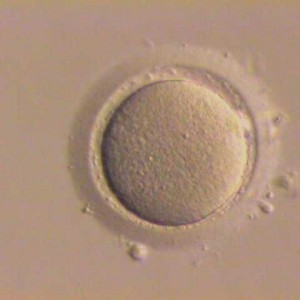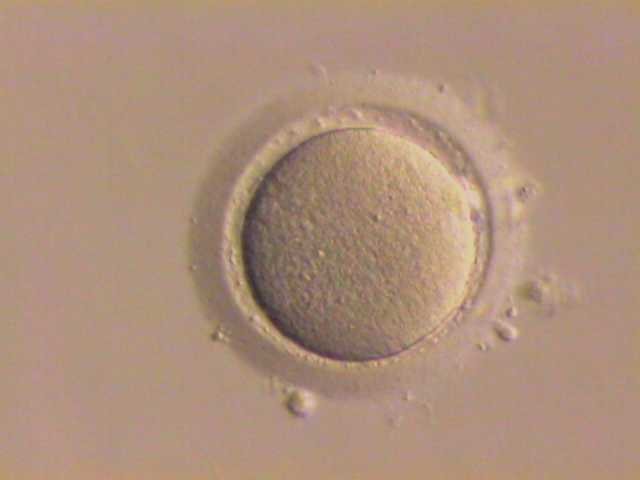With the public suddenly seeming to notice that three-parent biological children are now a scientific possibility, The Telegraph is reporting, “A group of 34 European politicians, including eight British MPs and peers, has signed a declaration attacking plans which will make the UK the first country in the world to permit the new IVF technique.”

Three-parent biological children are not science fiction. A secret program in the United States resulted in them being born more than a decade ago in New Jersey. Those original children are now in their early teens and may not even be aware that they were one of the 30 subjects if their parents didn’t disclosure it to them.
Here’s the thing: The technique was secretly used in New Jersey more than a decade ago, so the United States already has at least 30 teenagers who have DNA made up of three biological parents. If I recall correctly, it was done as part of an experimental program at the Institute for Reproductive Medicine and Science of St Barnabas. Even if the procedure is banned, these teens will pass on the combined three-parent DNA to their offspring, so it’s irrevocably changed the course of human evolution.
We were talking about this in my genetics courses, in New Jersey it so happens, back in 2004 and 2005. The professor – a charming, affable, fifty-something Jewish man who had mastered the art of socratic questioning in a way that was one of the most effective teaching tools I’d ever seen utilized – spent a good deal of time quizzing us about the ethical and moral implications. He didn’t just want us to think about the science, but about the consequences it would have for humanity.
For him, the right scientific answer wasn’t good enough. Yes, you had to know it. But you had to contemplate whether what you were doing was moral. We had to demonstrate that we had thought about how our behavior would help, or harm, the world. We also had to weigh the interest of the people who would benefit against that less-concrete public interest.
[mainbodyad]He was fond of real world examples so the discussions weren’t merely academic. Being Jewish, he used the greater risk of Tay-Sachs disease among genetic Ashkenazi Jews as an illustration. He explained that some couples, upon discovering they were both carriers, would make the heartbreaking decision to have no children at all rather than risk the 25% probability of their off-spring having the condition. It results in one of the most horrific deaths in nature, after watching the baby experience unimaginable suffering for the first 4-6 years of life despite appearing normal for the first six months of life. Over time, they lose motor function, go blind, are unable to move voluntarily, and are trapped in their mind before passing away, all while suffering regular seizures. It’s so bad, that if there were ever an argument for medical euthanasia, Tay-Sachs should be moved to the front of the line.
Does a politician, guided by some fuzzy notion of “this is the way it has always been”, have a moral right to stop the treatment? That’s a very important question. Perhaps it is a good thing as this sort of rapid scientific advancement raises the possibility of quite a few unknowns. While far fetched, there is simply no evidence, yet, given the infancy of the treatment that provides assurances against unforeseen consequences. What if a decent percentage of the the resulting children turn out to be extraordinarily healthy sociopaths? What if they live to be 400 years old? What if their children are always mutated or diseased? What if they develop an even worse neurological condition that starts the zombie apocalypse? Some people laugh at these questions, but they are valid. Absent evidence, which will develop over time as more data is gathered, contingencies should be made for low-probability events. Engineering recognizes this reality, which is why nuclear reactors and jumbo jets have redundancies.
Thinking About the Scientific Benefits and Implications of Such a Radical Shift in Applied Reproductive Knowledge
Now that it has already been done, the implications are enormous. We’ve discussed it in the past, but as it becomes better perfected and widespread, it’s going to end up helping bring near-extinct species back from the brink. It’s going to make it possible for two married men or women to have a biological child together. It’s going to make it so that a husband and wife won’t have to go through what Neil and Sharon Bernardi have experienced, watching seven of their children die; some within the first few days, one making it to as old as 21 before passing away.
One of the reasons people are responding so emotionally to this is because of the implications it opens up later down the road. If genetic modification becomes standard, it may result in the wealthy, over time, engineering smarter, healthier, hardworking children, creating a kind of eugenically-powered aristocracy. Likely, it would not start out as some grand plot, but individual families acting on that instinctive urge to make sure their kids lived better than the parents. The societal consequences of such a talent shift outside the traditional bell curve model that had naturally evolved would have ramifications that could not be predicted. Even worse, a society run by a dictator could create a caste of workers or slaves, who never questioned authority and complied with instructions. Though these things aren’t on the horizon at the moment, there is a tendency to extrapolate and look ahead.
[mainbodyad]Personally, one of my biggest concerns is that the United States now allows the patenting of human genes and sequences. Combined with this development, could a scientist in ten, thirty, or seventy years create a set of super-genetics that you could buy, like a shopping trip to Neiman Marcus? “Yes, I’ll have a 6’5″ male, blond hair, a bit of curl, blue eyes, heterosexual, athletic, 170 IQ, with a life expectancy of 150 years old, please.” “Hello, I’d very much like a 5’4″, cocoa-skinned, grey-haired female, bisexual, very thin, flame red eyes, with a life expectancy of 120 years old, please.”
That’s the natural end-game. If one country tries to ban it, it only takes a single jurisdiction in the world to make it legal and you’d have birth holidays, with financially secure couples taking a trip to design their son or daughter. I’m not sure how I feel about that. On one hand, the prospect is very exciting. On the other, the hubris of permitting a large percentage of shared DNA would make the population more vulnerable to single wipe-out even, such as another black plague.
In any event, California will be prepared. It just authorized birth certificates to contain three people to be recognized as the legal parents of children, though it did it for entirely different reasons following a court case that involved a child, born with the help of a sperm donor who was still in the picture. One parent died and the other went to jail. Despite the biological father (sperm donor) being a presence, and wanting to take the child full-time, a judge was required to send the minor to foster care. It was a perfectly idiotic scenario, but the judge’s hands were tied by the statutes so the three-person birth certificate should make it possible to avoid such horrible situations in the future.



